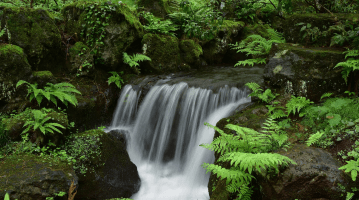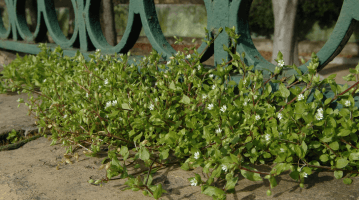The biodiversity of a forest
Primary or secondary, natural or planted, forests are incredible examples of biodiversity and play an essential role in the survival of the ecosystems they shelter.
Used since time immemorial for building, heating and processing, sustainably managing these precious resources is at the heart of conservation efforts. All over the world, these biodiversity hotspots are threatened by deforestation, land artificialisation and the effects of climate change. Yet they’re the key to a sustainable future and determine the survival of many species.
Forests are biodiversity hotspots
The Tree of Life, the World Tree, the Garden of Eden... it’s no coincidence that trees and forests take centre stage in all the founding myths of humanity. Forests have fascinated, reassured and enchanted us since the dawn of time. Guardians of the soil, bulwarks against erosion and desertification, carbon sinks and refuges for thousands of species, forests are the backbone of any prosperous ecosystem.
The Amazon, the “green lung of the planet”
Forest cover now accounts for just 30% of the Earth’s surface area, compared with 66% four hundred years ago. But trees and forests take care of the essential functions of life on Earth, underground, and even in the oceans. Forests and their 60,000 tree species are home to 80% of the world’s amphibian species, 75% of birds and 65% of mammals. They store 662 billion tons of carbon, or roughly half the planet’s stock.
The Amazon alone boasts a unique biodiversity: 40,000 plant species, including 16,000 tree species, 2.5 million insect species, 3,000 freshwater fish, 1,500 birds, 500 mammals, 550 reptiles... and there’s plenty more hiding in there we don’t know about. More than 2,000 new species have been identified and recorded since 1999, according to the WWF. It’s also home to many indigenous communities who live in harmony with these rich ecosystems, but whose ways of life are under increasing threat year after year.
While the Amazon, often known as the “green lung of the planet”, is regularly the focus of attention, all forest environments are genuine biodiversity hotspots, harbouring entire food chains. Whether subtropical, tropical, temperate or boreal, forests form complete entities, regulating their own temperature, humidity and atmosphere. The thousands of species that call forests home live in symbiosis with their ecosystem: the forest feeds and shelters them, and they take care of it in return, ensuring its good health and long-term survival. A fragile balance that has been maintained over millions of years. Dead wood is a great example of this complex cycle. It might look completely useless, but it supports over 25% of forest biodiversity (source: France’s National Forestry Agency – ONF).
A precious balance between animal, plant and human species
A forest is like a block of flats. Each floor is home to its own population and, together, these habitats form a harmonious whole where exchanges are constantly taking place, without outside interference. From the bottom to the top, there are many different layers:
– the underground layer, which covers the first 20cm below the surface and is home to the subterranean flora (particularly roots) and microfauna;
– the ground-cover layer, which is barely a few millimetres deep and includes the lichens and mosses that cover the surface;
– the herbaceous layer, which includes plants and grasses up to 1.5m tall when fully mature;
– the shrub layer, which includes shrubs and bushes up to 10m tall;
– the sub-canopy layer, the most majestic, which includes trees over 8-10m tall and extends all the way up to the canopy itself.
Each of these ecosystems depends on a fine balance to support not just the many animal and plant species, but also human life itself. Although most of us will spend our entire lives far away from forests, they continue to make our modern lives possible, whether by directly supplying resources (like food and medicinal products) and raw materials (like firewood, timber and pulp), or by acting as carbon regulators to offset the ever-increasing burden of our activities. Sustainably managing and preserving them is all the more important given the many threats to forests we see intensifying year after year. It’s essential we take inspiration from and support the indigenous communities who’ve made living alongside healthy forest ecosystems a central pillar of their way of life and have known how to preserve them from the start.
*Source: Global Forest Watch, FAO 2022. In Brief to The State of the World’s Forests 2022
Biodiversity in temperate forests: spotlight on France
Due to its semi-continental oceanic and Mediterranean climates, France is home to temperate forests. These forests are where a third of all species found in France call home and cover 30% of the country (source: France’s Forest Biodiversity Observatory). In them, you’ll find a wide variety of tree and plant species.
In deciduous forests, oak, chestnut and beech trees dominate the landscape. But the frontrunners by far are oak forests, which account for 41% of all French forests (source: France’s National Forestry Agency – ONF).
Typical of the Landes region and the mountain ranges, France’s softwood forests are home to maritime and Scots pines, spruces and firs.
Alongside the main species, you’ll also find plenty of secondary species, such as hornbeam, maple, ash, linden and alder, shrubs like hazel, willow and elderflower, and smaller plants, such as ferns, ivy, moss and lichen.
This diversity of species is essential. Having been overexploited, France’s forests were seriously weakened throughout the 20th century, with the commercial exploitation of timber leading to the artificialisation of the country’s forests, impoverishing the biodiversity of these species. Today, the country’s National Forestry Agency oversees their sustainable management and tries to ensure their resilience in the face of change and increasing threats.
Threats: forests in danger
Certain natural threats, like wildfires, insects and disease, are an integral part of the dynamics of a forest. But while these are common and sometimes even contribute, in the case of forest fires, to the regeneration of forests, they’re increasingly accentuated by human activity and climate change. Fires are becoming more common and more intense, storms more violent, floods more sudden and violent... every year, 25 million hectares of forest disappear around the world, which is equivalent to the surface area of Greece (source: Global Forest Watch, FAO 2022. In Brief to The State of the World’s Forests, 2022).
Deforestation is a global tragedy. Not content with wiping out entire ecosystems and destroying the food chains on which we depend, it’s also one of the main causes of climate change. Trees and forests act as thermal regulators and capture a large amount of the carbon released into the atmosphere as a result of human activity. During photosynthesis, trees absorb carbon dioxide and release oxygen. Deforestation drastically reduces a forest’s ability to perform this vital function.
But that’s not all. Forests are also large-scale pollution-removers, capable of absorbing nitrates and phosphates from watercourses and filtering out dust and air pollution. They also play a crucial role in the water cycle. Forests capture rainwater to replenish water tables and ensure the forest vegetation stays hydrated, contribute to the phenomenon of condensation, and ensure humidity is well distributed. In their absence, these cycles are disrupted and drought phenomena are aggravated. They also help fix the soil and combat erosion, desertification, landslides, avalanches and the effects of the wind. If that wasn’t enough, they’re also a major source of subsistence for many indigenous populations, who are condemned a little more each time a tree is felled without consideration for the role it plays.

River biodiversity

Urban biodiversity

